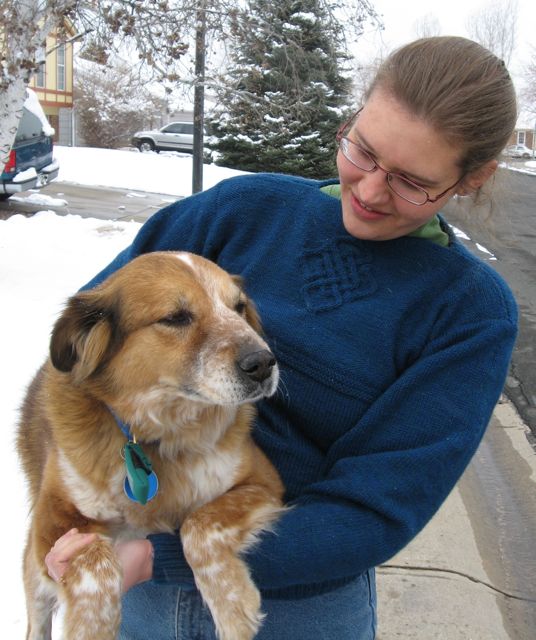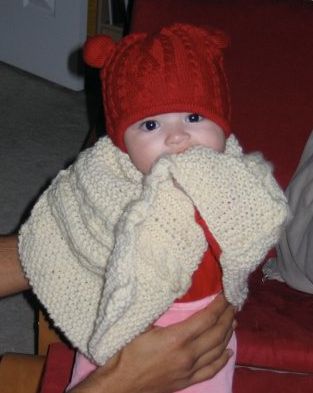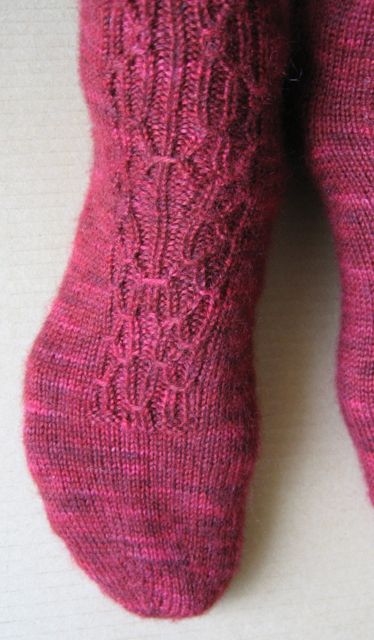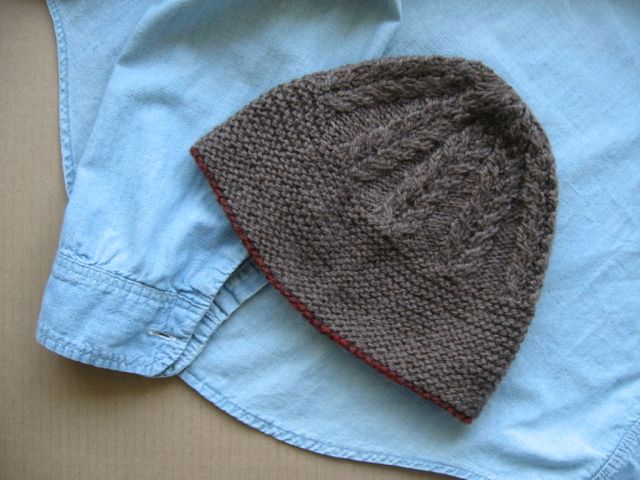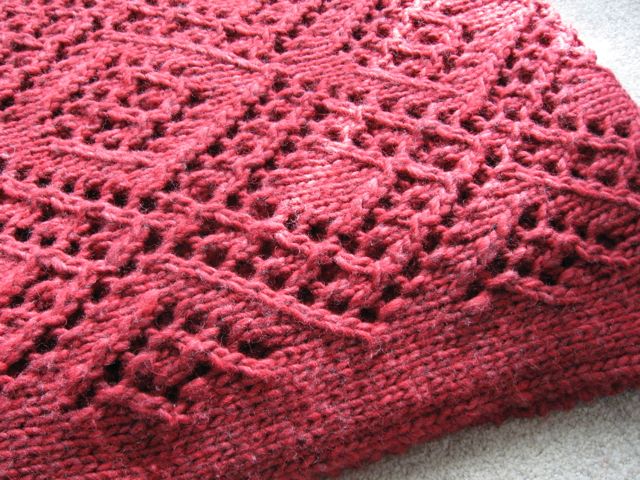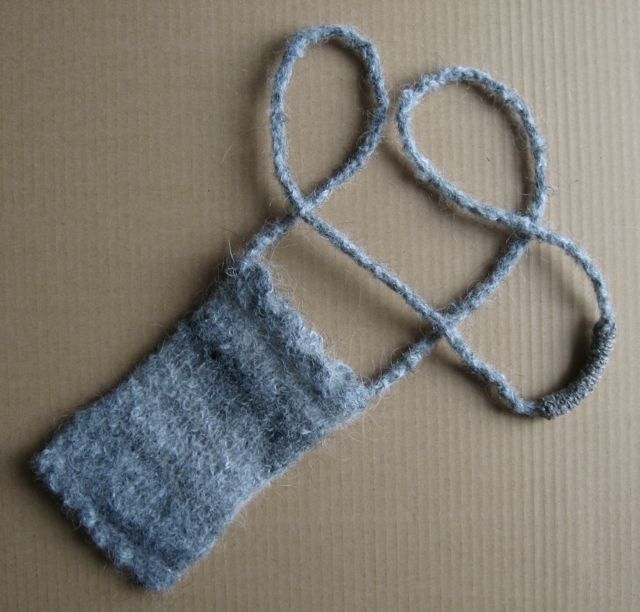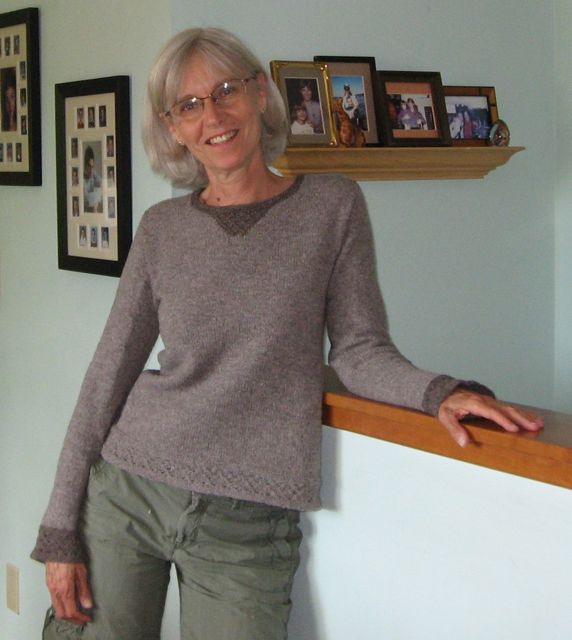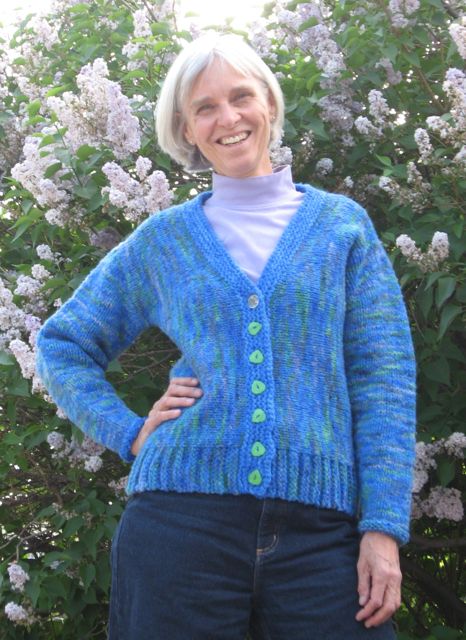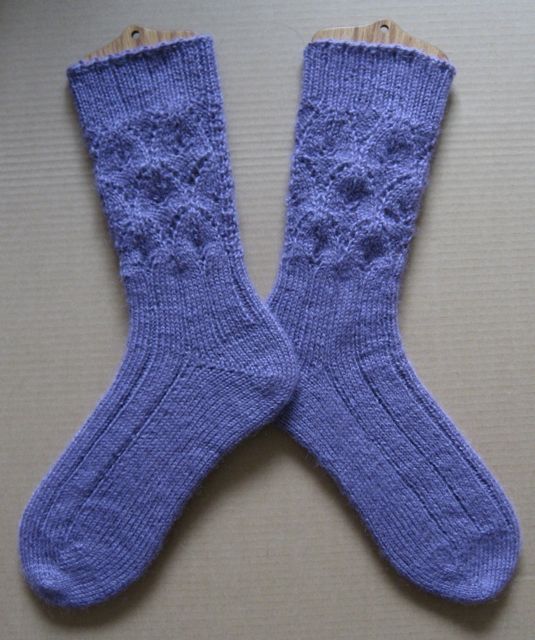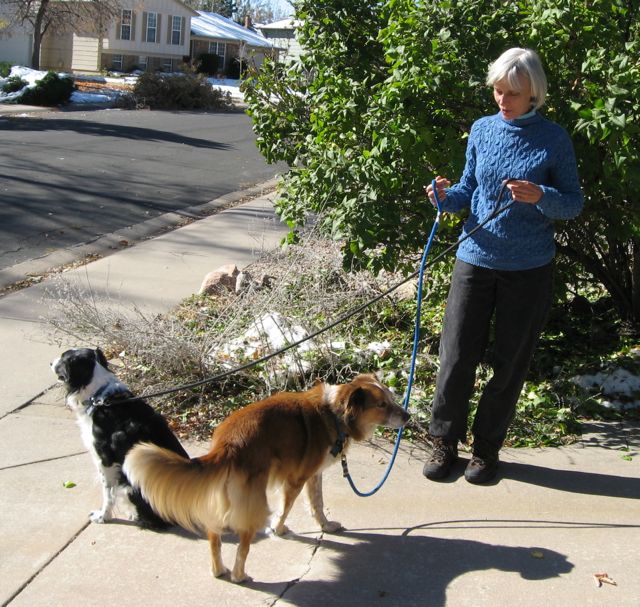Completing the quintet of posts from Deb Robson which so far has included ‘Growing Wool’, ‘Harvesting Wool’, ‘Processing Wool’ and ‘Working with Wool’, we have the final instalment – ‘Wearing Wool’. This wonderful collection of projects shows the versatility of WOOL and how knowing your breeds and being clear about which fibres are better for which jobs means you always have the right sort of WOOL for whatever you want to make… it’s so obvious from Deb’s words and pictures that WOOL runs right through her life, doing everything from protecting her i-pod/camera, to keeping a baby warm. Thanks so much to Deb for supplying WOVEMBER with such wonderful nuggets of wisdom throughout this month, and for all the support you have shown WOVEMBER!
01 – Notice the snow in the background? Wool’s light weight, cozy warmth, and breathability make it ideal for chilly weather. (Those flecks on the dog and the sweater are newly fallen snow. This is the knitter/model’s first completed project. It’s her own design. Yes, she practised the cabled knot first on a swatch, and she had a lot of stockinette, or stocking stitch, produced by her needles before she got to the point where the knot was to be placed. The yarn was commercially spun from a blend of mid-grade wools.)
02 – There’s nothing quite like a baby cuddled in wool! This one’s ears are warm (in a soft hat) and her poncho is sturdy enough to stand up to a bit of gumming or chewing, if necessary (made of mid-grade wools: they endure more haphazard treatment than the really soft types).
03 – This lustrous yarn is both soft enough and strong enough to make perfect socks. It was commercially spun from Bluefaced Leicester, and hand-dyed by Lisa Souza, at Lisa Souza Knitwear. The pattern is Cat Bordhi’s “Simply Splendid Socks” from her Sweet Tomato Heel collection.
04 – Merino: the mainstay of the modern wool market, in this case this soft fiber made the perfect hat for a friend recovering from chemotherapy. It’s Frog Tree yarn, and the pattern is Jared Flood’s “Fortnight.”
05 – I take a broad view of the definition of “wearing” when it comes to wool. This bulky wool yarn became a perfect afghan. The design, one of my own, is called “Filigree Diamonds Afghan,” and it uses one of Dorothy Reade’s original stitch patterns as presented by Donna Druchunas in the book Successful Lace Knitting. The yarn, a blend of mid-grade wools, is Brown Sheep Burly Spun.
06 – Some wools felt like a dream. I made this little bag from Karakul and felted it in the washing machine. Karakul is beautiful and sturdy–but not especially soft. So after it was done, I encased the part of the strap that would rub against my neck in a bit of leftover Corriedale yarn. The bag fits whatever electronic device I need to keep handy at the moment: my point-and-shoot camera, my iPod Touch, or my cell phone. (The concept of the bag comes from the “Monedero” in Donna Druchunas’ Ethnic Knitting Discovery.)
07 – Here’s a lightweight sweater that’s soft enough to wear by itself and sturdy enough to go wherever I do. The wool is Cormo, fingering weight, from Elsawool. The pattern is “Corrina” by Ann McCauley, from Wool People 3, although I adapted it to use two natural colors instead of a single, solid version.
08 – The Karakul for the little bag worked because it felted so beautifully. On the other hand, this Suffolk doesn’t felt at all, so this sweater gets machine washed and dried (and has not been chemically treated). The yarn was spun and hand-dyed by Mountain Meadow Wools (and is held double throughout the knitting). The pattern is Lucy Neatby’s “Venus Rising.”
09 – I like longwools for socks, because I’m hard on my footwear. Spun smoothly, the yarns don’t itch. This is Wensleydale, which also takes dye with enthusiasm! The yarn is from Flying Fibers in Yorkshire. The pattern is Brenda Dayne’s “Tintern Abbey,” although I re-gauged it to fit the yarn I had and I used my favorite heel and toe construction.
10 – Merino in a pullover sweater of my own design, very handy for three-season wear. Commercially spun; hand-dyed by Karin Maag-Tanchak, of Periwinkle Sheep.
All content and photos © Deb Robson and republished here with her kind permission
